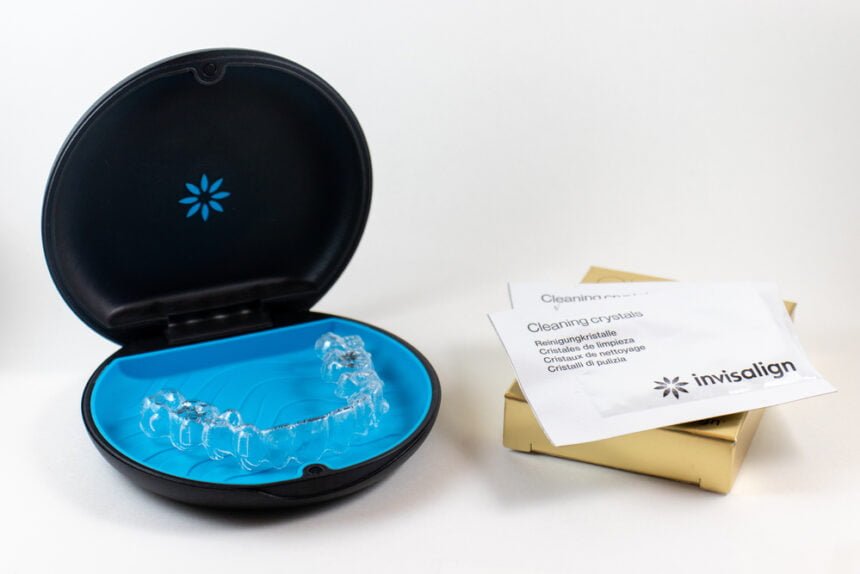You may be surprised to hear that crooked teeth are a lot more common than you thought. Scientific America shared a report that 90% of people have teeth that are at least slightly misaligned.
The good news is that there are many things that you can do if you want to have straighter teeth. One option is try using Invisalign.
What is Invisalign?
Invisalign is a type of orthodontic device that uses clear plastic aligner trays to gradually straighten your teeth. We talked about some of the benefits of them before, but we felt it was important to go into more detail.
Each tray is custom-fitted to match the unique contours of your smile and each tray moves your teeth 0.25mm closer towards their final desired position. Selecting an Invisalign provider with proven success is essential to a successful experience. Look for providers that showcase before-and-after Invisalign images as evidence. Invisalign dentist in Toronto provide great services to meet the needs of all their dental clients. Ultimately, Invisalign can help give you the beautiful, straight smile you have always wanted – and with minimal disruption to your daily routine!
How Does Invisalign Work?
Invisalign works by gradually realigning misaligning teeth to restore proper alignment. This method can correct everything from crookedness and over crowdedness of your teeth to open bites or underbites.
Contrary to traditional wire braces, Invisalign trays can easily be removed for eating, drinking and brushing your teeth – eliminating food restrictions while still enjoying all your favorite meals and snacks!
However, Invisalign requires that its trays are worn for approximately 22 hours a day for optimal results. Otherwise, your teeth won’t move in accordance with how they should, making your journey towards straight, beautiful teeth longer than necessary.
Misaligning of teeth can also lead to other issues, including nightly clenching or grinding (bruxism), which wears away enamel on teeth and causes headaches and even TMJ symptoms. With Invisalign you can correct misalignments in order to sleep soundly while protecting enamel from wear-and-tear.
How Long Will Invisalign Take?
Your Invisalign treatment duration depends on the severity of your teeth crowding and spacing issues; less serious cases should require less time than more serious ones.
As part of your Invisalign journey, you will receive a series of clear plastic aligners specifically tailored to your smile that gradually shift your teeth with gradual pressure applied.
Once the series of trays have been completed, each will be worn for approximately two weeks before moving on to the next. You should continue this pattern of switching out trays until both your smile and bite have been completely straightened out.
Once your Invisalign treatment is complete, we will give you a retainer to keep your teeth in their newly aligned positions. We advise patients to wear their retainers consistently so they do not develop crookedness or go back into previous alignment. Wearing your retainer also protects gums against decay and disease.
How Will Invisalign Work for Me?
Some factors can impact how effectively Invisalign will work for you. Perhaps most important is whether or not you can commit to wearing your aligners 20-22 hours each day with only exceptions for eating and drinking. If this schedule proves impossible for you, other solutions should be explored instead.
Another key element to consider is your level of discipline. If you regularly misplace or forget your aligners, this could prolong the treatment and cause it to take longer than anticipated.
Clear aligners offer an effective alternative to metal braces as they don’t irritate lips and gums like traditional braces do, providing more confidence in your smile and giving less noticeable braces in the mouth. Furthermore, Invisalign can be used to treat issues like overbites, underbites and open bites while closing gaps that cause pain or gum disease – providing another benefit over traditional metal braces!
What Can I Expect from Invisalign?
Invisalign trays are virtually undetectable and can be taken off at any time without leaving a trace, making them easier to maintain hygiene and reduce gum disease risk by eliminating food debris accumulation that may otherwise lead to tooth decay and other dental issues.
Invisalign provides another advantage over metal braces by not restricting what patients can eat and drink, since traditional metal braces may trap sticky or chewy food particles which then develop bacteria, leading to plaque build-up.
Some individuals initially experience discomfort when starting Invisalign for the first time, typically caused by its edges rubbing against their tongues. To reduce this rubbing sensation, patients can rub a small amount of orthodontic wax over these edges or take over-the-counter pain relievers as an aid. Furthermore, Invisalign provides additional health benefits including enhanced bite functions, decreased risk of gum disease, and enhanced overall dental health for users.

